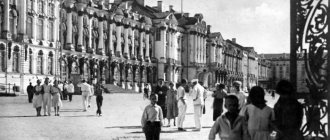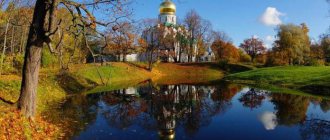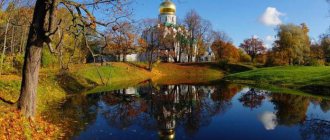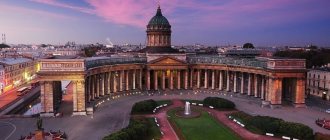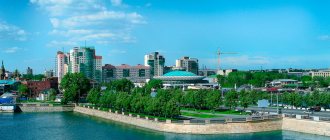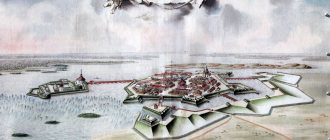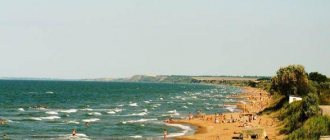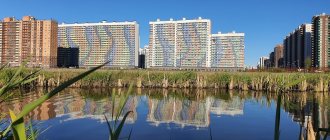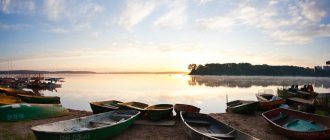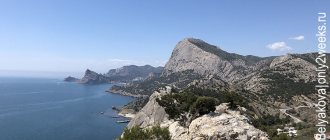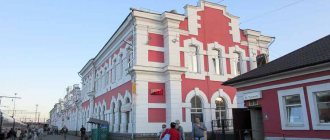St. Petersburg is not only a beautiful city and the cultural capital of the country, but also a cultural center of world significance. It was founded in 1703 by Peter I. The city has more than 8,000 cultural heritage sites. For several centuries, St. Petersburg was the capital of the Russian state. The city has a huge number of different museums and theaters. The atmosphere in the city is special, because St. Petersburg is a concentration of creative personalities - poets, writers, artists, musicians, painters and sculptors. It is here that they receive special inspiration that allows them to create great works of art.
City of St. Petersburg (Russia)
St. Petersburg is the second most populous city in Russia and is often called the “Capital of the North.” It is located in the north-west of the European part of the country in the eastern waters of the Baltic Sea at the mouth of the Neva River. St. Petersburg is one of the most stunning cities in Europe, with a huge historical and cultural heritage, as well as a magical atmosphere. This is a city of amazing architecture, romance and inspiration, drawbridges and white nights.
St. Petersburg has a magnificent historical center, in which almost every building is a work of art and has its own history. The city center is a UNESCO World Heritage Site and is dotted with canals, beautiful Baroque bridges and a wide variety of attractions. St. Petersburg is also home to one of the world's greatest and oldest museums, the Hermitage, which includes a huge collection of art, treasures and antiquities.
St. Petersburg has many unofficial names. Most often you can hear: St. Petersburg, the cultural or northern capital, City on the Neva, Petrograd, Leningrad, Northern Venice.
Vyborg district
This is one of the largest districts of the city, the territory size is 115.4 km², the population is almost 500,000 people. The area is located on the right bank of the Neva, in the central part of the city. Divided into two parts - residential and industrial. The environmental situation leaves much to be desired - there are a lot of emissions from different enterprises. But the authorities are trying to compensate for the pollution - they are organizing green areas, public gardens, and parks.
The area is relatively young, there are no problems with infrastructure - there are many shops, shopping centers, schools, kindergartens, hospitals.
Modern business centers and office buildings have been built.
Transport accessibility is provided by 6 metro stations and highways. Lots of public transport stops.
The real estate is represented by old houses, Khrushchev-era buildings in the center and elite residential areas, new buildings in the outlying areas.
Might be interesting:
Moscow
Velikiy Novgorod
Krasnodar
Kazan
all cities
Primorsky district
It is home to the largest number of St. Petersburg residents - almost 600,000 people. Area - 109 km². There is clean air and good ecology here. There are practically no industrial enterprises, but parks, squares and forests occupy a significant part of the territory.
The area is developing rapidly, new residential complexes are constantly being built. Real estate here is considered prestigious, apartments are expensive. Cottages and townhouses have also been built in the area.
Since many people live here, there is a shortage of kindergartens, schools, hospitals and clinics. However, there are plenty of shops, shopping centers and restaurants. 5 metro stations have been opened, a railway has been built, but the problem with transport accessibility has not yet been solved; there is not enough public transport for all residents. Owners of personal cars also often find themselves stuck in traffic jams, despite the fact that new road junctions and highways were built not so long ago. The area is located behind the railway, so congestion most often occurs behind the crossing.
Geography and climate
St. Petersburg is located in the north-west of Russia, 650 km from Moscow. The city is located at the mouth of the Neva River, which flows into the Gulf of Finland in the Baltic Sea. St. Petersburg is built on the swamps of the Neva Lowland and the islands of the Neva Delta, dotted with canals and small rivers.
View of St. Petersburg
The climate of St. Petersburg is temperate, with continental and maritime features. The seasons are clearly expressed. Summer is cool and rainy. In winter there can often be severe frosts, fog and cold winds. Thanks to its northern location in St. Petersburg, you can observe an interesting phenomenon - White Nights (when night turns into twilight). White nights usually last from mid-May to June.
The weather in St. Petersburg is very changeable. Her whims have become a peculiar feature of the city and the topic of numerous jokes. Rain (especially in summer) can start at any moment, even when nothing seems to predict it. In winter and autumn, St. Petersburg is often covered by gray clouds and cold winds blow from the Gulf of Finland. Also, due to the low-lying terrain, there is a risk of flooding.
Resort area
It occupies a significant area of the coast of the Gulf of Finland - 267 km². However, slightly less than 80,000 St. Petersburg residents live here.
The point is expensive real estate - you can compare the Kurortny district with Moscow Rublyovka. This is a suburb of St. Petersburg with elite cottages. But there is also construction of multi-storey buildings with cheaper apartments.
The infrastructure is at a high level - there are shopping centers, shops, cafes and restaurants, gyms and beauty salons. There are many sanatoriums and health centers. There are good, well-maintained beaches.
The area is very green; 80% of all forest parks in St. Petersburg are located on its territory. This is an ecologically clean place with pine trees.
One of the beaches in the Kurortny district
There is no metro here, but the transport links are good and you can get to the city center without any difficulties. A railway has been laid and high-speed trains are running.
Tourist information
- Population: 5.4 million people.
- Area - 1439 km2.
- Russian language.
- Currency is Russian ruble.
- Time - UTC +3.
- The average height above sea level is 3 m.
Interesting facts about St. Petersburg
- St. Petersburg is the largest city in Europe among those that are not capitals of states.
- St. Petersburg is the northernmost among large cities.
- The northern capital ranks third in Europe in terms of population, second only to Moscow and London.
- St. Petersburg is famous for its drawbridges. There are about 20 of them in the city. The bridges are raised between 1.00 and 5.00 for the passage of large ships. Therefore, if your route includes crossing these bridges, then it is better to clarify the exact disengagement time, for example, here - https://mostotrest-spb.ru/razvodka-mostov.
One of the best ways to get to know St. Petersburg is to take a walk along the St. Petersburg canals. It’s not for nothing that this city is called the “Venice of the North”. More than 800 bridges were built in St. Petersburg, and the total length of canals is about 300 km. The canal system was built to protect the city from floods. The two most popular waterways are the Griboyedov Canal and the Winter Canal. The Griboyedov Canal passes under beautiful bridges and next to some of St. Petersburg's most famous landmarks. The shortest canal in the city is the Winter Canal. It takes place near the Winter Palace.
Streets of St. Petersburg
Administrative division of St. Petersburg
St. Petersburg is divided into 18 districts:
- Admiralteysky
- Vasileostrovsky
- Vyborg
- Kalininsky
- Kirovsky
- Kolpinsky
- Krasnogvardeisky
- Krasnoselsky
- Kronstadt
- Resort
- Moscow
- Nevsky
- Petrogradsky
- Petrodvortsovy
- Seaside
- Pushkinsky
- Frunzensky
- Central
The historical center of St. Petersburg is formed by the following districts: Admiralteysky, Vasileostrovsky, Petrogradsky and Central.
About people in St. Petersburg
The people here are really creative and open-minded. Just walk along Nevsky Prospect and you will see a huge number of street musicians, artists, performers and poets. They paint pictures, sing, play unusual instruments, act out skits and stage entire performances. If you have the opportunity, visit some apartment building - there you can see with your own eyes how the St. Petersburg elite lives and relaxes. This is a great opportunity to meet unusual people or meet a descendant of some cult personality.
Best time to visit
The most popular time to visit St. Petersburg is from May to June - the season of the famous White Nights. Also, a great time to come to the Northern capital will be July, August and September. In October the flow of tourists decreases. November to March is the lowest tourist season.
Saint Petersburg
Kolpinsky district
This is one of the largest districts of St. Petersburg. Its area is 105.8 km². However, less than 200,000 people live in such a large area. This is a suburb of St. Petersburg. There are no metro stations and the public transport network is poorly developed. Despite the fact that the M-10 federal highway passes through the area, traffic jams are almost constant here.
The environment is bad. This is an industrial zone where there are about 30 large enterprises. At first, houses in the Kolpino region were built for factory employees. Then little-known construction companies came here, some of which turned out to be scammers. But recently, modern new buildings have begun to appear in the area, and apartments are actively being sold. Real estate is cheap. St. Petersburg residents do not want to move here, although the social infrastructure here is quite well developed.
Story
St. Petersburg was founded in 1703 by Peter I in the Neva Valley in the territory of the province of Ingria, conquered from Sweden. In ancient times (in the 7th - 8th centuries) the Ilmen Slovenian and Krivichi tribes lived here. Then these territories belonged to Novgorod and were part of the trade route “From the Varangians to the Greeks.”
St. Petersburg is named after St. Peter, whom Peter I considered his patron.
The history of St. Petersburg begins with the founding of the Peter and Paul Fortress on Zayachiy Island. In 1704, the Kronstadt fortress was founded on Kotlin Island, and a year later - the Admiralty Shipyard. In 1712, St. Petersburg became the capital of Russia.
Saint Petersburg
By the middle of the 18th century, many of the “Peter’s” buildings were in a state of disrepair, which was facilitated by several large fires. During this period, a new city development plan was approved, which included the construction of numerous buildings and streets. By the end of the 18th century, about 200,000 people lived in St. Petersburg. The city included more than 1,200 streets and alleys, as well as more than 3 thousand houses.
Drawbridge
In 1824, the largest flood in its history occurred in St. Petersburg. In 1825, an attempted coup d'etat was carried out on Senate Square, known as the Decembrist uprising. In the first half of the 19th century, the architectural appearance of the city was finally formed. In 1836, the first railway in Russia was built between St. Petersburg and Tsarskoe Selo.
In 1914, St. Petersburg was renamed Petrograd. In 1918, after the October Socialist Revolution, St. Petersburg lost its capital status. Moscow became the capital of the state. In 1924 the city was renamed Leningrad. In 1941, the blockade of Leningrad by German troops began, which is one of the most tragic pages in the history of the city. The blockade lasted 900 days and claimed a huge number of lives.
Peter. Saint Isaac's Cathedral
After the end of World War II, the city was restored and developed vigorously. In 1951, Pulkovo Airport was founded. In 1955, the first metro line was launched. In 1991, the city was returned to its historical name - St. Petersburg.
What to bring from St. Petersburg as a gift
These can be a variety of memorable gifts that you associate with this city. You can purchase a souvenir associated with Peter 1 - figurines of the Bronze Horseman or magnets with his image, or these can be small copies of Peter's bust in the form of a keychain.
For literature lovers, a valuable souvenir can be an image of a favorite writer printed on a badge or brooch. Or maybe you’ll like the option with an image of the author’s quote, for example, on a shopping bag.
Those who are captivated by the nautical theme may like the options of purchasing a vest or cap, a mug with a design on a nautical theme, or paintings depicting nautical maps.
Those who are close to St. Petersburg rock culture will like souvenir options in the form of T-shirts, bags, postcards with the image of V. Tsoi or the Leningrad group.
You can also purchase a religious gift as a souvenir - an icon or postcard with the face of saints, a cross or a vessel for holy water.
In general, there are a huge number of options for purchasing memorabilia; you just need to choose the one you like.
How to get there
St. Petersburg Pulkovo Airport is one of the largest in Russia. It is located 20 km south of the city. The airport is connected to the metro by several bus routes. Pulkovo has air connections with most of the largest cities in Russia and Europe.
St. Petersburg has five railway stations. You can get to St. Petersburg by train from Moscow, Helsinki, Riga, Tallinn, Minsk, Kyiv and other cities.
Public transport in St. Petersburg is represented by the metro, trolleybus, tram and bus lines. The metro is the most efficient transport for moving around the city. The St. Petersburg metro includes 5 lines. The sixth one is currently under construction.
Panorama of St. Petersburg
Rent a Car
If you want to have time to see many sights and interesting places in comfort, it will be more convenient to rent a car. The cost per day starts from 2,100 rubles.
Rental includes:
- Unlimited mileage
- Accident insurance
- Third party liability insurance
- Theft insurance
You can rent a car on the proven service Economybookings.
Food
St. Petersburg is famous for its gastronomy, which includes Russian national, European, Georgian and Asian cuisine.
Popular St. Petersburg dishes:
- Shawarma
- Beef Stroganoff
- St. Petersburg donuts
- Fried smelt
- Leningradsky rassolnik
Panorama of St. Petersburg
Krasnoselsky district
This residential area of St. Petersburg is considered the most environmentally friendly place in the city. There are practically no enterprises here, but there are many parks, squares, and forests. The territory is significant - 115 km². A little more than 400,000 St. Petersburg residents live here. A significant part of the area is occupied by settlements and the private sector, with many cottages.
The infrastructure is well developed - there are shops, medical facilities, kindergartens and schools.
Real estate is inexpensive, houses are mostly budget, but not always of high quality. However, active development of high-rise business-class buildings is underway. The transport problem is acute - there is not a single metro station here, and there is not enough public ground transport for all residents, and traffic jams often occur. It takes more than an hour to drive to the city center. By 2023, it is planned to open the Yugo-Zapadnaya metro station, which should improve the situation.
The most environmentally friendly district of St. Petersburg is Krasnoselsky
Attractions
St. Petersburg has a stunning variety of attractions, historical sites and cultural monuments, some of which are included in the list of UNESCO World Heritage Sites. Here you can visit magnificent museums and luxurious palaces, powerful fortresses and spacious squares, see ancient churches, drawbridges and White Nights, stroll along beautiful embankments and old streets, where you can feel the atmosphere of the real St. Petersburg.
Hermitage
Hermitage
The Hermitage is one of the largest and most famous museums in the world (the second largest art museum after the Louvre in Paris). It is a huge museum complex consisting of 6 buildings, the architectural dominant of which is the Winter Palace. The Hermitage is an impressive palace museum that contains more than 3,000,000 exhibits covering all facets of art, history and archaeology.
Its luxurious interiors house the world's largest collection of paintings, among which you can see masterpieces by Rembrandt, Leonardo, Michelangelo, and Rubens. In addition to exhibits of French neoclassical and impressionist art, Flemish Baroque and Italian Renaissance, the museum houses an impressive collection of Russian art, Egyptian antiquities and archaeological finds from around the world.
You can find out the cost of tickets to the Hermitage and buy electronic tickets on the official website of the museum - https://www.hermitagemuseum.org
The Hermitage was founded in the second half of the 18th century by Catherine II. Until 1852, the museum was closed to the general public. The main exhibition is housed in the luxurious building of the Winter Palace. This magnificent Baroque building was designed by Bartolomeo Rastrelli and commissioned by Catherine II. Construction of the palace began in 1754 and was completed in 1962. Until 1904, the Winter Palace was the official residence of the Russian emperors.
Palace Square
Palace Square
Palace Square is the main city square of St. Petersburg. This is a spacious public space located in front of the Winter Palace. The square is surrounded by a magnificent architectural ensemble of the 18th and early 19th centuries. In the center is the Alexander Column, erected in the first half of the 18th century in honor of the victory over Napoleon. The column is made of a single piece of red granite and has a height of 47 meters. The size of Palace Square is 5.4 hectares.
Palace Square was the epicenter of many important historical events. In 1879, an assassination attempt was made here on Alexander II, and in 1917, the storming of the Winter Palace marked the beginning of the October Revolution.
On the opposite side of the Winter Palace is the impressive General Staff Building, designed by Carlo Rossi in 1829. Previously, there were residential buildings here, but they poorly fit into the architectural ensemble of the main square of St. Petersburg. The two wings of the General Staff building are connected by an impressive triumphal arch dedicated to the victory in the Patriotic War of 1812. The arch is topped with a sculpture of the goddess of victory Nike, who controls six horses.
Peter-Pavel's Fortress
Peter and Paul Fortress
Peter and Paul Fortress is one of the main attractions of St. Petersburg, a unique monument of architecture and engineering. This fortification structure on Hare Island was founded by Peter I in 1703 and is actually the first “stone” of the new city (the founding date of the fortress is generally considered to be the founding day of St. Petersburg). Interestingly, the fortress has never seen military action. From the 18th century to the 20s of the 20th century, a prison was located within the walls of the Peter and Paul Fortress. Since 1924, this building has been a museum.
Every day at 12.00 a special cannon is fired from the Naryshkin Bastion.
The symbol of the fortress and its most significant attraction is the Cathedral of Saints Peter and Paul with a high spire, on top of which there is a figurine of an angel. This expressive baroque church is the tomb of all the rulers of the Russian Empire, starting with Peter I. The cathedral was built according to Trezzini's design between 1712 and 1732. Next to the cathedral is the Grand Ducal Tomb, built at the end of the 19th century and intended for uncrowned representatives of the Romanov dynasty.
The mint is also an interesting object. This is the oldest industrial enterprise in St. Petersburg, founded in 1724, and one of the largest coin minting centers in the world. It is believed that the mint was built according to the design of Antonio Porto.
Vasilyevsky Island
Vasilievsky Island
Vasilievsky Island is a small island in the historical center of St. Petersburg with an area of about 11 km2. Located at the mouth of the Neva and connected to the city center by two drawbridges (it is also connected by bridges to Dekabristov Island and the Petrograd Side). Vasilyevsky Island is known for its beautiful architecture, museums and parks. Here is the Menshikov Palace - a masterpiece of Peter the Great's Baroque architecture. This is the first stone building in St. Petersburg, which was built by the closest associate of Peter I, Count A.D. Menshikov.
St. Andrew's Cathedral
St. Andrew's Cathedral is an architectural monument on Vasilievsky Island, built in the second half of the 18th century. This church is in the Baroque style, which has a beautiful carved iconostasis.
Nevsky Avenue
Nevsky Prospect
Nevsky Prospekt is the main street of St. Petersburg, 4.5 km long, rich in magnificent baroque and classicist architecture. Crosses the Moika, the Griboyedov Canal and the Fontanka. Nevsky Prospekt was formed in the second decade of the 18th century and includes more than 200 beautiful historical buildings and several familiar landmarks:
- The Admiralty is an impressive building in the classicist style with a tall, elegant spire, on top of which there is a boat. The Admiralty is one of the most significant historical buildings in St. Petersburg and a symbol of Russia's rich maritime history. The building was founded in 1711 and significantly rebuilt in the first half of the 19th century according to the design of the architect Andreyan Zakharov. Now it houses the maritime museum and the command of the Russian Navy.
- The Stroganov Palace is a masterpiece of Russian Baroque, built in the mid-18th century.
Admiralty
- Anichkov Bridge is one of the most beautiful bridges in St. Petersburg, famous for its sculptures. It consists of three arches and crosses the Fontanka River. The bridge is named after engineer Lieutenant Colonel Mikhail Anichkov, who supervised the construction of the first engineering structure on this site. The modern bridge was built in the first half of the 18th century and reconstructed at the beginning of the 19th century.
- Anichkov Palace is one of the imperial palaces, built according to the design of Francesco Rastrelli on the orders of Elizabeth Petrovna in the first half of the 18th century. The palace combines baroque and classicism architecture.
Kazan Cathedral
- The Kazan Cathedral is an impressive church in the Empire and Classical style with a grandiose bell colonnade, founded in the second decade of the 19th century to store a valuable relic - the icon of the Mother of God of Kazan. The Kazan Cathedral was built by order of Emperor Paul I and is one of the largest churches in St. Petersburg. The church is designed after St. Peter's Basilica in Rome and has a beautiful interior with many columns. The famous commander Mikhail Kutuzov rests here.
- The Alexander Nevsky Lavra is a monastery founded by Peter I in 1713. The relics of Alexander Nevsky are kept here. The Lavra is a complex of religious buildings in the style of early classicism, most of which were built in the second half of the 18th century under Catherine II. The architectural dominant of the monastery is the Trinity Cathedral - a single-domed church with two towers. Its most valuable relic is a one and a half ton baroque memorial (so-called cancer) of Alexander Nevsky, made of silver.
- The Alexandrinsky Theater is a drama theater, one of the oldest in Russia. It is one of the iconic cultural buildings of St. Petersburg. The Alexandrinsky Theater was founded in 1756.
- The Eliseevs' store is a building from the early 20th century, a masterpiece of Art Nouveau architecture.
Peterhof
Peterhof
Peterhof is a chic ensemble of palaces, magnificent gardens and fountains, founded by Peter in 1705 and built on the model of the French Versailles. Located 30 km from St. Petersburg on the shores of the Gulf of Finland. Peterhof was the country residence of Russian emperors and amazes with its atmosphere of luxury. Its most famous attraction is the Grand Cascade, a group of 64 fountains. There are more than 170 fountains in Peterhof. They are fed by underground water and some of them are real works of art.
The architectural appearance of Peterhof was formed over the 18th and 19th centuries. The main building of the complex is the Great Peterhof Palace, built in 1714-1725 and rebuilt in the Verstalian Baroque style under Elizabeth Petrovna. To the south of the palace is the Upper Garden with ponds and fountains, covering an area of 15 hectares. On the shores of the Gulf of Finland there is a stunning French-style Lower Park (102 hectares) with the Grand Cascade, a greenhouse and several palaces.
Church of the Savior on Spilled Blood
Church of the Savior on Spilled Blood
Church of the Savior on Spilled Blood is one of the most beautiful churches in St. Petersburg, located on the embankment of the Griboyedov Canal. This is a colorful sacred structure in the traditional style of Russian religious architecture, built by order of Alexander III on the site where his father Alexander II was mortally wounded. Construction of the temple began in 1883 and was completed 24 years later. Nicholas II already opened the temple.
The Church of the Savior on Spilled Blood was built according to the design of Alfred Parlande. Its architecture clearly shows imitation of St. Basil's Cathedral in Moscow. The inside of the temple is decorated with stunning mosaics and paintings. During the revolution, the church was used as a warehouse for vegetables. During World War II there was a morgue here. The restoration of the temple and restoration of its historical appearance took 30 years.
Saint Isaac's Cathedral
St. Isaac's Cathedral
St. Isaac's Cathedral is the world's largest Orthodox basilica and one of the religious buildings of St. Petersburg. The temple was completed in 1858 and has a magnificent neoclassical façade. The building is a cross-domed basilica with a height of 101.5 m. The architecture is distinguished by the impressive main dome, which has a diameter of almost 26 meters. The outside of the church is lined with gray marble and decorated with sculptures. There are porticos on each side. Inside, the walls of the temple are lined with white Italian marble and decorated with paintings.
Mariinskii Opera House
Mariinsky Theater
The Mariinsky Theater is one of the most famous cultural sites in St. Petersburg. The theater is located in a magnificent building, which is a masterpiece of neoclassical architecture with elements of neo-Byzantine design. The Mariinsky Theater was founded at the end of the 18th century by Catherine the Great. But the theater received its building only in the second half of the 19th century.
Cruiser Aurora
Cruiser Aurora
The cruiser Aurora is an armored military deck cruiser launched in 1900. Participated in the Russo-Japanese War of 1904–1905. and “survived” the Battle of Tsushima. The cruiser Aurora is a symbol of the October Revolution. The shot of his cannon served as the signal for the storming of the Winter Palace. Now the ship is part of the exhibition of the naval museum.
Bronze Horseman
The Bronze Horseman
The Bronze Horseman is one of the symbols of St. Petersburg and the most famous monument to Peter I. This is an impressive bronze sculpture installed on Senate Square in 1782. The author of the monument is the French sculptor Falconet. It’s interesting that Peter’s head was sculpted by his student.
Kunstkamera
Kunstkamera
The Kunstkamera is a museum of rarities and wonders, founded in 1714 by Peter I. This is the first public museum in Russia, the first exhibits of which Peter personally brought. The Kunstkamera is located in a beautiful building in the Peter the Great Baroque style, built on the spit of Vasilievsky Island. Unfortunately, most of the original collection was destroyed by a severe fire in 1747. Now the Kunstkamera is called the Museum of Anthropology and Ethnography named after Peter the Great.
Kronstadt Fortress
The Plague Fort is one of the symbols of Kronstadt.
The Kronstadt Fortress is the first fortification structure in Russia. The fortress was founded by Peter I in 1723 and throughout its history it reliably protected St. Petersburg from the sea. Once it was armed with more than 300 cannons and 250 guns that controlled the fairway. The fortress was disarmaed in 1965. Only the Northern Wall and forts have survived well to this day.
Vasileostrovsky district
Another central area of St. Petersburg beloved by tourists. It is located on three islands, the total area of which is 21 km². The population is about 200,000 people. Vacationers stay here for the attractions and proximity to the center - you can walk to Nevsky Prospekt.
But the locals don’t like to live here - there are many problems with transport. The islands are connected to the rest of the city by four bridges. Until 2016, during the construction of bridges from the Vasileostrovsky district, it was impossible to go anywhere by land transport. But after the opening of the WHSD section, the situation was resolved, and there were fewer traffic jams.
There are also metro stations built here, but their capacity is not enough; there are always a lot of people in the metro.
But real estate is still expensive. The area is built up with old housing stock, new panel buildings, and elite residential areas.
Vasileostrovsky district is located on three islands
THIS IS INTERESTING. Vasileostrovsky district is one of the oldest in St. Petersburg, it was founded in 1917.
Other sights and interesting places of St. Petersburg
Smolny
Smolny is a convent founded by order of Empress Elizabeth Petrovna in 1744 on the site of the palace of the same name. The monastery began to be built according to Rastrelli's design. The architect planned to build a huge cathedral with a high bell tower here. But the project was never completed during Elizabeth's lifetime. During the reign of Catherine II, the monastery began to be used as an institute for noble maidens. The monastery was completely completed during the reign of Nicholas I. Its cathedral has bright Baroque architecture and is considered one of the main long-term construction projects in St. Petersburg (it took almost 90 years to build).
Chizhik-Pyzhik
Chizhik-Pyzhik is a tiny monument on the Fontanka embankment, erected in 1994. Interestingly, this small sculpture is very popular among tourists. For example, there is a tradition of throwing coins on a small pedestal and making a wish. If the coin does not fall, then the wish will come true.
The little siskin has been stolen several times. It was returned several times. The last time they didn’t find it and installed a copy.
Narva Triumphal Gate
Narva Triumphal Gate is a magnificent bronze monument of architecture in the Empire style, decorating Stachek Square. It was built in the first half of the 19th century in memory of the heroes of the Patriotic War of 1812.
Sampson's Cathedral
Sampsonievsky Cathedral is one of the oldest churches in St. Petersburg, first mentioned in 1709. The current Baroque building was built between 1728 and 1740. based on Trezzini's design.
St. Vladimir's Cathedral
Vladimir Cathedral is an Orthodox church on the square of the same name with a separate bell tower. It was built in the second half of the 18th century in a style transitioning from late Baroque to early classicism.
Cathedral of Saints Peter and Paul
The Church of Saints Peter and Paul is an old Lutheran church, which is practically the same age as St. Petersburg. It was founded in 1704. The first building was built within the walls of the Peter and Paul Fortress. Then the church was allocated a plot of land on Nevsky Prospekt. The current building, in the late classicist style and with neo-Romanesque elements, was built in the first half of the 19th century. Unfortunately, during the Soviet period, the temple lost most of its original interior decoration.
Naval Cathedral
The Naval Cathedral in Kronstadt is an impressive neo-Byzantine style cathedral built in the early 20th century. The interior of the church is modeled after the Hagia Sophia in Istanbul.
Cathedral Mosque
The Grand Mosque is an impressive religious building from the early 20th century with two 48-meter minarets, an impressive portal and a dome decorated with blue ceramic tiles.
Choral Synagogue
The Choral Synagogue is the largest Jewish religious building in Russia and the second largest in Europe. The synagogue was built at the end of the 19th century in the neo-Moorish style.
Northern Palmyra
Palmyra, or Tadmor (both meaning “city of palm trees”), is a city of difficult fate in an oasis of the Syrian Desert. The Bible and Josephus claim that Palmyra was founded by Solomon, but be that as it may, the city was repeatedly captured, destroyed and rebuilt - first by Nebuchadnezzar II and then by Roman emperors. The heyday of Palmyra is associated with the name of the proud and formidable queen of the 3rd century, Zenobia Septimia, who declared the Palmyra kingdom independent of the Roman Empire, and also subjugated all of Syria, Egypt and part of Asia Minor. In 744, Palmyra was finally ravaged by the Arabs, and a small village was formed near the ancient Roman ruins, which has survived to this day - although now it is in danger of being completely destroyed, because in May 2015 Palmyra was captured by ISIS militants. The city is famous for being beautiful even in ruins.
The name “Northern Palmyra” appeared in the same 18th century, after the accession of Catherine II. In 1750–1751, two Englishmen - James Dawkins and Robert Wood - made the first expedition to the ruins of the forgotten Palmyra, and already in 1753 Wood published the work “The Ruins of Palmyra” in English and French. The book was presented to the Empress with the signature “Catherine II, Zinovia of Northern Palmyra.” This image took root, and cold St. Petersburg became a city of palm trees. In the poem “Image of Felitsa” (1798), Derzhavin’s lyrical hero turns to Raphael with a request to paint a portrait of Catherine and twice compares the empress herself to a palm tree:
Like the morning dawn of spring, So she would smile; Like a palm tree planted in paradise, So the slender one would rise.
As a palm tree bows its fragrant top and its face, so write it with a quiet, important, noble tread.
Senate square. 1900s © Multimedia Art Museum
Might be interesting:
Pskov
Smolensk
Sochi
Kaliningrad
all cities
Pushkinsky district
It is located in the southeast of St. Petersburg, its area is almost 240 km². It ranks second in terms of territory size. About 220,000 people live here.
The area is suburban, located outside the ring road. There are few industries here and there are no environmental problems. There are many parks, squares, green corners. It's quiet, calm, cozy here.
Until recently, there was only prestigious real estate here - old houses near parks, expensive cottages. But now economy-class neighborhoods are being built, the apartments there are quite affordable.
There are several universities, technical schools, many schools and kindergartens.
There is one metro station built here, but most residents and tourists prefer to travel by train. In summer there are often traffic jams due to the large number of vacationers.
People mainly come here to visit Tsarskoye Selo and Pavlovsk.
Tsarskoye Selo is located in the Pushkinsky district
Suburbs
Peterhof
The most famous imperial residence is located 30 kilometers from St. Petersburg. The Great Peterhof Palace was restored after almost complete destruction during the war and brought back to its original appearance. However, most tourists come to Peterhof for the famous Grand Cascade of fountains with an outstanding sculptural composition. It will be possible to catch the fountains in action only in the warm season, but the palace and park ensemble is beautiful even in winter. In addition to the fountains in the Lower Park, it is worth going out to the bay and strolling past the neat Hermitage, Marly and Monplaisir pavilions.
In addition, buildings in the pseudo-Gothic style have been preserved in Peterhof, so if you have time, you should take a walk around the city center and look into the neighboring parks: the very quiet English Park, the half-abandoned Sergievka, or Alexandria, full of unusual buildings. A detailed guide to Peterhof is here. It is easy to get here by train, bus or by water on a high-speed meteor.
25 ideas for trips around the Leningrad region and its surroundings - where you can go for a weekend or a couple of days.
Pushkin
Pushkin and Tsarskoe Selo are famous for the Catherine Palace and the Amber Room. The interiors of the palace amaze with their richness, and Alexandrovsky and Ekaterininsky are some of the best examples of landscape art, transporting you to the atmosphere of imperial Russia. Pushkin is also located thirty kilometers away; you can get here by car, bus or train in forty minutes.
Vyborg
Vyborg is located in the north of the Leningrad region, an hour and a half drive away. It experienced the most Scandinavian influence and was part of Finland for a long time, which is why it is least similar to other Russian cities. You can come here for a day or stay overnight. Of particular interest are the medieval Vyborg Castle and outstanding examples of northern modernism. And Mon Repos Park will allow you to enjoy real northern nature.
Kronstadt
Kronstadt was founded almost simultaneously with St. Petersburg to protect the city from external attacks from the water. For a long time, the island was a closed military city, so many unique and mysterious points have been preserved on it. For example, the buildings where the Admiralty was to be moved, the neo-Byzantine large-scale St. Nicholas Cathedral, ancient docks and a modern theme park.
A detailed guide to Kronstadt and ways to get to the city.
New spaces
New Holland
The island of New Holland appeared after the creation of two artificial canals. It was built up in the 18th century with premises of the Admiralty shipyards, mainly of a warehouse type. The warehouses were not used for a long time, and the abandoned island became one of the most mysterious places in St. Petersburg. In the 2010s, a large-scale reconstruction of the island began, and its result was the emergence of a new fashionable space with a stage, a park, a children's playground and many establishments: for example, in the former Bottle prison there are several dozen cafes, eateries and shops.
Sevkabel Port
Sevkabel is a new space in Gavan on Vasilyevsky Island. It occupies the premises of a former factory, to which it owes its name. In addition to the fact that Sevkabel has become one of the most fashionable spots, the embankment offers an excellent view of the Neva, so it’s better to come here in the evening for picturesque sunsets. Sevkabel often hosts exhibitions, concerts and festivals; there are many bars and cafes to suit every taste and budget.
Berthold Center
The Berthold Center on Grazhdanskaya Street houses cafes, bars, small shops and an open roof. It’s nice to come here in warm weather, sit on the open verandas, in the courtyard or on the roof, with a view of St. Isaac’s Cathedral. The courtyard itself is quite stylish, plus there are really good places with burritos, vegan cuisine and giant pizza.
Outbuilding
A small but atmospheric courtyard on Vosstaniya Street with cozy establishments: a coffee shop, a wine bar and authentic shops. Nearby is one of the city’s main bars, Nekrasova, which gets especially lively on Friday and Saturday evenings. Even if bar-hopping isn't your thing, it's worth strolling through this neighborhood on a weekend evening to catch the laid-back, European-inspired atmosphere.
central District
It occupies a small area, only 17 km². Over 200,000 people live here. This is the historical center of the city, most of the buildings were built before 1917. There are many emergency and dilapidated buildings here, but real estate is still expensive. Especially those apartments that are located in the “golden triangle” - between the Neva, Fontanka, Admiralteysky Prospekt and Gorokhovaya Street. Apartments with a view of the Moika River are also highly valued.
Apartments with a view of the Moika in the Central district of St. Petersburg are expensive
The main attractions of the city are concentrated in this area.
- Nevsky Avenue.
- Singer's house.
- Admiralty.
- Kazan Cathedral.
Tourists prefer to stay here, so there are many hostels and mini-hotels located in the houses. There are cafes, canteens, restaurants, grocery stores, and souvenir shops.
Administrative and government buildings were built in the Central region.
11 metro stations are open, buses, trolleybuses, trams, and minibuses operate. Due to ground transport during rush hour, traffic jams form for many hours on the roads.
There are few trees, and the air is heavily polluted due to automobile fumes.
Frunze district
This is an area in the east of St. Petersburg, its area is 37 km². The number of inhabitants is about 390,000 people.
One of the oldest districts of the city. Today it is considered dormant, practically not developing. The buildings are dense, mostly panel apartment buildings. There is no new construction. Apartments are inexpensive. The infrastructure is good. Near the metro there are hypermarkets of famous chains, there are cafes, restaurants, beauty salons and gyms.
Universities, technical colleges, schools and preschool institutions were built. There are hospitals.
There are 7 metro stations open, but transport accessibility is still low. There is not enough public transport, there are always traffic jams on the roads, and few exits.
Main museums
Hermitage
It is unlikely that the Hermitage needs a special introduction, since it is one of the main museums in Russia with a unique collection of world art. If your visit time is limited, it is better to choose your favorite era in art or follow a special route that covers the most famous art pieces in the collection. All of them are marked on the map at the entrance to the museum. In any case, before going on a trip, you should immediately accept that you won’t be able to see everything, and just enjoy the interiors of the palace and the most interesting exhibits. Free day is the third Thursday of the month.
Russian Museum
The Russian Museum has an excellent exhibition of Russian art from different eras. Walking through the halls, it’s as if you’re observing the development of painting over time, every now and then bumping into well-known masterpieces by Aivazovsky, Bryullov, Repin and Kustodiev.

